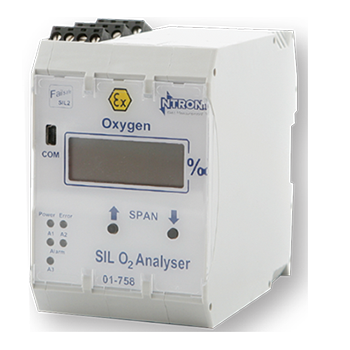
How to ensure safety, process integrity, and part quality with O2 monitoring
Demand for additive manufacturing is set to increase by over 20% year on year until at least 2030, according to industry analysts Research and Markets. This growth rate is phenomenal given the maturity of the AM market. It is driven by factors such as demand for increasingly specialized products for aerospace, medical, and transport applications. Additionally, the interest in creating customized products for both industry and consumers is contributing to this trend. Equally important is the development of new materials, particularly metals used with laser or electron beam powder bed fusion systems.
These systems are progressively employed in prototype development, crafting tooling for injection molding and CNC machines, and for manufacturing finished products; the latter is now being produced in ever greater volumes as bed sizes and manufacturing processes improve.
Understanding oxygen risks in metal powders
The increasing use of powder bed fusion systems combined with the growth in the availability of metal powders highlights the importance of oxygen measurement for process safety and efficiency, as well as high quality of finished parts.
Safety is a prerequisite of any industrial process. Where fine metalized powders are being manufactured, used, or recycled, employees face health risks through inhalation or skin contact, as well as the risk of explosion. An explosion can be caused if an inflammable material, an ignition source, and oxygen are all present. The potential for all three to be present within the build chamber in any powder bed additive manufacturing system is high, with even extremely low concentrations of oxygen creating a significant risk of fire or explosion.
Oxygen can, however, also cause problems in other areas. In particular, it can oxidize feedstock materials, such as aluminum and titanium, affecting their mechanical strength and thermal properties; this typically results in compromised strength between fused or sintered layers of powder, increased porosity and reduced ductility, all of which can lead to quality issues.
Measuring oxygen for an optimized process
Most powder bed additive manufacturing systems will incorporate an oxygen measurement sensor and analyzer, with the output used for process monitoring and quality control purposes. Specifically, this type of instrument will be used to detect changes in the operating environment caused by leakages, ineffective purging of the build chamber with inert gas, or sintering inconsistencies caused by feedstock contamination.
Monitoring is usually carried out continuously, making it essential that the sensor performs reliably and consistently throughout the sintering process. This can be problematic with certain types of sensors that can typically lead to surface oxidation or interference from the argon or nitrogen gases commonly used for inerting the space in the build chamber.
A further requirement, given the relatively small space in most build chambers, is that sensors are compact and easy to access in the event that they require replacement.
|
This is where an instrument such as our SIL-capable SILO2 LT Fail-Safe Oxygen Analyzer plays a vital role. Developed specifically for use in safety-critical additive manufacturing applications, including powder bed systems and the manufacture of metalized powders, the SILO2 LT features a robust yet highly sensitive Zirconia sensor. With the capability to detect oxygen concentrations as low as 1 ppm, this sensor is engineered for optimum operation in harsh environments and offers fast response, minimal drift, and long operating life. |

|
This high-performing sensor, combined with SILO2, can be used as a stand-alone device or incorporated into higher-level control platforms. The combined instrument conforms to Safety Integrity Level protocol, in accordance with IEC61508 and IEC61511, and incorporates a range of fail-safe functions; for example, unlike other systems, it can immediately distinguish between a lack of oxygen and a sensor failure.
As a final point, it should be noted that oxygen is not the only potential contaminant for additive manufacturing; moisture can also create problems that affect process efficiency, reliability, and part quality. Incorporating a suitable moisture or humidity measurement instrument into each additive manufacturing system is, therefore, essential. The good news is that we can supply oxygen, humidity and Dew Point sensors and analyzers as integrated packages for OEMs.
Did you know, with over 40 years of experience in the development of innovative precision instruments, we are application experts in oxygen and Dew Point measurements for additive manufacturing applications. If you would like to discuss your requirements, then please contact our team today.
Related Products
Portable Oxygen and Moisture Analyzer - Ntron AM Trace
Oxygen Analyzer - Ntron Microx
Compact Oxygen Transmitter - SenzTx
Want to see more information like this?
Sign up to one of our Industry newsletters and you’ll receive our most-recent related news and insights all directly to your inbox!
Sign Up